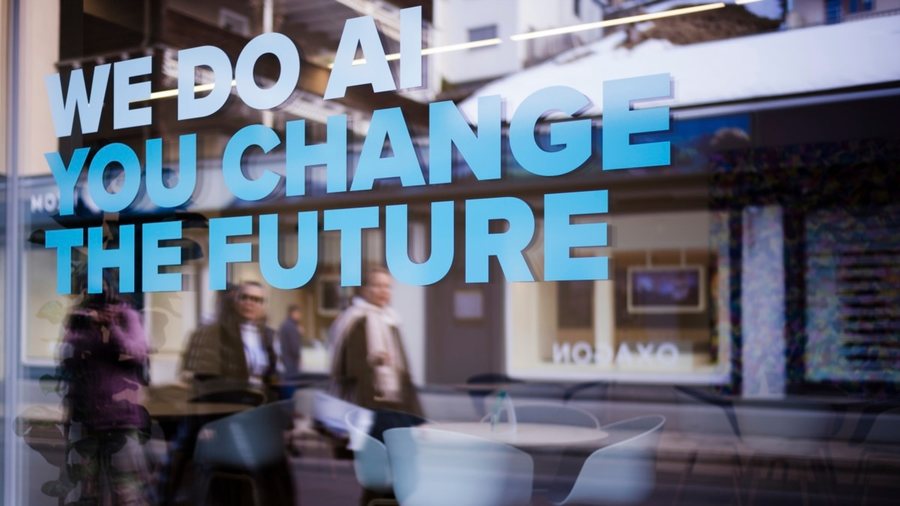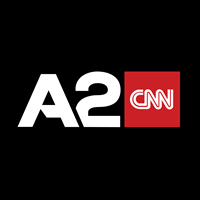
The attention drawn to the artificial intelligence program created by the new Chinese technology company DeepSeek stirred stock markets on Monday and ignited debates about the economic and geopolitical competition between the United States and China in the development of artificial intelligence technology.
The company's assistant app became the No. 1 downloaded app on Apple's iPhones on Monday, fueled by curiosity about the ChatGPT competitor. Part of the worry for some U.S. tech watchers is the idea that a new Chinese company could overtake U.S. companies at the forefront of artificial intelligence innovation at a fraction of the cost.
This, if true, calls into question the vast sums of money that US technology companies say they plan to spend on the data centers and computer microcircuits needed to support further advances in artificial intelligence.
US President Donald Trump said on Monday that the technology of a new Chinese company called DeepSeek should act as a boost for American companies and said it was a good thing that companies in China have come up with a cheaper and faster method of artificial intelligence.
"The introduction of DeepSeek, an artificial intelligence company from a Chinese company, should serve as a wake-up call to our industries that we must be focused on competing to win," President Trump said in Florida.
But the hype and misunderstandings surrounding the technological advances of the Chinese company DeepSeek also sowed confusion.
"The models they built are fantastic, but they're not miracles," said analyst Stacy Rasgon, who follows the semiconductor industry and was one of several stock analysts to describe Wall Street's reaction as overblown.
"They're not using any innovations that are unknown or secret or anything like that," Ms. Rasgon said. "These are things that everyone is experimenting with."
What is “DeepSeek”?
The startup DeepSeek was founded in 2023 in Hangzhou, China, and released its first AI model later that year. Its CEO Liang Wenfeng previously co-founded one of China’s largest investment funds, High-Flyer, which focuses on AI-driven trading.
DeepSeek began to attract more attention in the AI industry last month when it released a new AI model that it boasted was on par with similar models from American companies, such as OpenAI's ChatGPT program, and was more cost-effective in using expensive Nvidia chips to train the system with large amounts of data. The Chinese company's app became more widely available when it appeared on Apple and Google's app platforms earlier this year.
But it was a research study published last week — the same day as President Donald Trump’s inauguration — that set off the ensuing panic. The study involved another artificial intelligence model from DeepSeek called R1, which showed advanced “reasoning” skills — such as the ability to rethink one’s approach to a mathematical problem — and was significantly cheaper than a similar model sold by OpenAI, called o1.
"Regardless of their worldview on the economy," Ms. Rasgon said, "I think the price level scared people."
Behind the drama surrounding DeepSeek's technical capabilities is a debate within the United States over how best to compete with China in artificial intelligence.
"Deepseek R1 is the Sputnik moment for artificial intelligence," entrepreneur Marc Andreessen said in a post Sunday on the social platform X, referring to the 1957 satellite launch that kicked off a Cold War space exploration race between the Soviet Union and the United States.
Mr. Andreessen, who has advised President Trump on technology policy, has warned that the imposition of excessive regulations on the artificial intelligence industry by the US government will hinder American companies and enable China to get ahead.
But the attention on DeepSeek also threatens to undermine a key US foreign policy strategy in recent years, to limit the sale of American-made artificial intelligence semiconductors to China. Some experts on US-China relations don't think this is an accident.
“The technology innovation is real, but the timing of the launch is political,” said Gregory Allen, of the Center for Strategic and International Studies. Allen compared DeepSeek’s announcement last week to the release of a new phone by Chinese company Huawei, which is sanctioned by the US, during diplomatic talks on the Biden administration’s export controls in 2023.
"Trying to show that export controls are futile or counterproductive is a really important goal of Chinese foreign policy right now," Mr. Allen said.
President Trump signed an order on his first day in office last week stating that his administration would "identify and eliminate loopholes in existing export controls," signaling that he is likely to continue and strengthen former President Biden's approach.
Nvidia shares fell 18% on Monday, but the company in a statement praised the company's DeepSeek work as "a brilliant advancement of artificial intelligence" that used "widely available models and computations that are fully export control compliant."
What sets DeepSeek apart?
One thing that sets Chinese company DeepSeek apart from competitors like OpenAI is that its models are "open source" - meaning the key components are available for anyone to access and modify, although the company has not disclosed the data it used to train the algorithm.
But what has drawn the most admiration about DeepSeek's R1 model is what Nvidia calls a "perfect example of Test-Time Scaling" - or when artificial intelligence models effectively demonstrate their reasoning process and then use it for further training, without having to feed them new data sources.
"It's just like thinking out loud," said Lennart Heim, a researcher at the Rand Corporation.
OpenAI's reasoning models, starting with o1, do the same thing, and it's likely that other U.S.-based competitors, such as Anthropic and Google, have similar capabilities that haven't yet been made available, Mr. Heim said.
But “it’s the first time we’ve seen a Chinese company come this close, in a relatively short period of time. I think that’s why a lot of people are paying attention,” Heim said. “I believed that OpenAI was on top, that it was the king and that no one could catch up. It turns out that’s not entirely the case.”/VOA (A2 Televizion)











